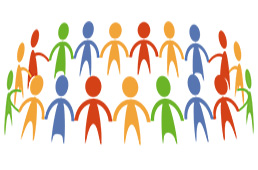What Does A Tree Have To Do With Me?
By Tova Horwitz
Jews around the world are celebrating Tu B’Shvat (ט”ו בִּשְׁבָט), the New Year of the Trees and Fruits, which takes place on the 15th day of the Hebrew month of Shvat.
This special holiday is first mentioned in the Talmud, in Tractate Rosh Hashana, where it is written, “The Academy of Hillel taught that the 15th of Shvat is the New Year for the Trees.” Technically, this is the day when trees begin drawing nourishment from their sap in place of absorbing water from the ground. This differentiation was significant in ancient times; according to Jewish law fruit which has blossomed prior to Tu B’Shvat could not be used as tithe for fruit which blossomed after that date.
Today, in modern Israel, Tu B’Shvat marks the symbolic arrival of spring as it is celebrated just as the warmth of summer can be felt and the almond tree blossoms are flowering. People across the country, from young children to senior citizens, celebrate the day by going out into nature, planting trees and enjoying the sweet taste of fruits that are native to Israel, including almonds, dates, figs, carob and raisins. Some also have a custom to hold a Tu B’Shvat seder with songs, blessings and deeper reflections on the symbolism of the fruits.
Interestingly, when we take a closer look at the Hebrew language used in the Torah to describe trees, we can gain a deeper appreciation and understanding of trees, and can even learn something about ourselves!
There are frequent places in the text where man is compared to a tree. For example, “A person is like the tree of a field…” (Deut. 20:19); “For as the days of a tree shall be the days of my people.” (Isaiah 65:22); “He will be like a tree planted near water…” (Jeremiah 17:8). Also, a righteous person (צַדִּיק, tzaddik) is noted as being strong as a tree“ planted by streams of water, producing fruit in its season, whose leaf does not wither. And he will prosper in all that he does” (Psalms 1:3). In another instance it reads, “The righteous shall flourish like the palm-tree; grow mighty like a cedar in Lebanon,” (Psalms 92:13).
Also, the Hebrew words used to describe both trees and people are the same: צְמִיחָה (tzmicha, growth), הִתְפַּתְּחוּת (hitpat’chut, development), פְּרִיחָה (pricha, bloom), קְמִילָה (kimeela, withering). Clearly, the relationship between humans and trees is significant!
What can we make of this?
On a physical level, we can view a tree in a new light; not only as something that provides us with food, shade, wood, sap, beauty, clean air and so many other things, but as a divine miracle in its own right. We can commit ourselves on Tu B’Shvat to taking better care of trees and all of nature.
From a spiritual perspective, Tu B’shvat is also the ideal opportunity to recognize that we humans are similar to trees. Trees require sunshine, air and water to grow. Additionally, trees which have roots that are deeply rooted in the soil, and branches that are flexible in the wind will thrive and be strong and beautiful.
People, too, need the appropriate physical and spiritual nourishment. To thrive and reach our potential, people need to cultivate both strong roots – connections to family, community, values and heritage – as well as learn to be pliable when handling the winds of change, stress and the ups and down of life. As we say in Israel, it’s a skill and an advantage לִזְרוֹם (to go with the flow)!
This Tu B’Shvat, may the trees be blessed to be strong and healthy and may we be blessed to be like trees!



